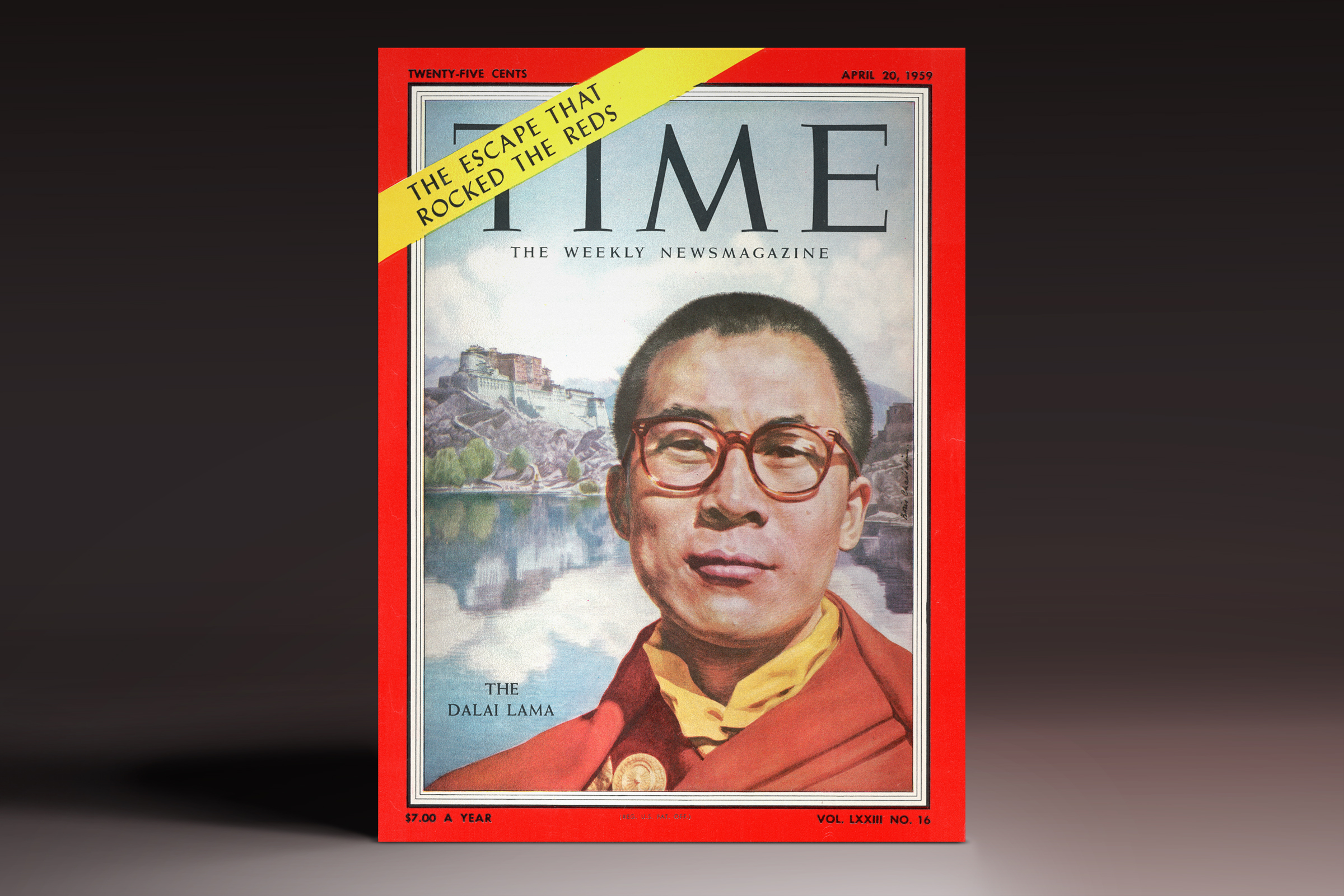
Buy a print of The Dalai Lama – 1959 cover here
A single image can certainly evoke strong memories. This 1959 TIME cover photo and the accompanying story of my escape from Tibet brings movingly back to me the tragedy of my land and of my people.
I will soon be 88. This cover appeared when I was 24. At that time, in spite of our earnest efforts to coexist, the Chinese authorities did not, unfortunately, respond positively. The very survival of the Tibetan identity was at risk. So, it was decided that, in the interests of our land and our people, I should leave Lhasa. Initially I had some fear and hesitation about doing this. But since the Tibetan people had placed their hope and trust in me, I knew where my responsibility lay. In the same way, when I was hardly 16, and even though I was ill-prepared, I had to take up the political leadership of Tibet. Sometimes I say that at 16, I lost my personal freedom, and at 24 my country’s freedom was lost. Subsequently, I became a refugee.
Read the Original Story From 1959: The Dalai Lama Escapes from the Chinese
The tragedy of Tibet has yet to be resolved. But my becoming a refugee in India brought with it many hidden blessings. For one, the moment I was able to cross over from Tibet to India on March 31, 1959, I realized the value of freedom. Since then, I have been the longest-staying guest of the Indian government, enjoying every possible liberty. In addition, India has provided me, and those other Tibetans who managed to escape, the freedom to preserve and promote Tibetan identity and our culture of peace and compassion, and to share them with the entire world.

Most important, I have enjoyed in exile the freedom to pursue my spiritual development, even as I have tried to take care of Tibetan affairs. For many decades now, I have had the opportunity to engage in dialogue with leaders of different religious traditions, scholars, and scientists. These new friends have enabled me to understand more clearly the state of humanity and the ways in which I can contribute to a better world.
It is my strong belief that modern education does not give sufficient attention to the importance of warmheartedness. We are social animals; our survival depends on others. As human beings we thrive on affection, which is one reason why all religious traditions stress compassion. People with little or no interest in religion are also human beings and for them, too, experiencing loving-kindness contributes to a healthy and happy life. I am now pledged to devote myself to my four principal commitments: promoting human values; religious harmony; ancient Indian wisdom, on the basis of compassion (karuna) and nonviolence (ahimsa); and, obviously, Tibetan culture—the basis of our identity. I firmly believe that all four can contribute to a more peaceful world.
Today, I am stateless, unable to return to my country. But we Tibetans have a saying, “Your homeland is wherever you are happy. And whoever loves you is your parent.” India and its people, as well as many across the world, have provided me with constant love and support. When I look at this cover from 1959, I am grateful that I have been able to lead a meaningful life dedicated to helping others.
More Must-Reads from TIME
- Cybersecurity Experts Are Sounding the Alarm on DOGE
- Meet the 2025 Women of the Year
- The Harsh Truth About Disability Inclusion
- Why Do More Young Adults Have Cancer?
- Colman Domingo Leads With Radical Love
- How to Get Better at Doing Things Alone
- Michelle Zauner Stares Down the Darkness
Contact us at letters@time.com